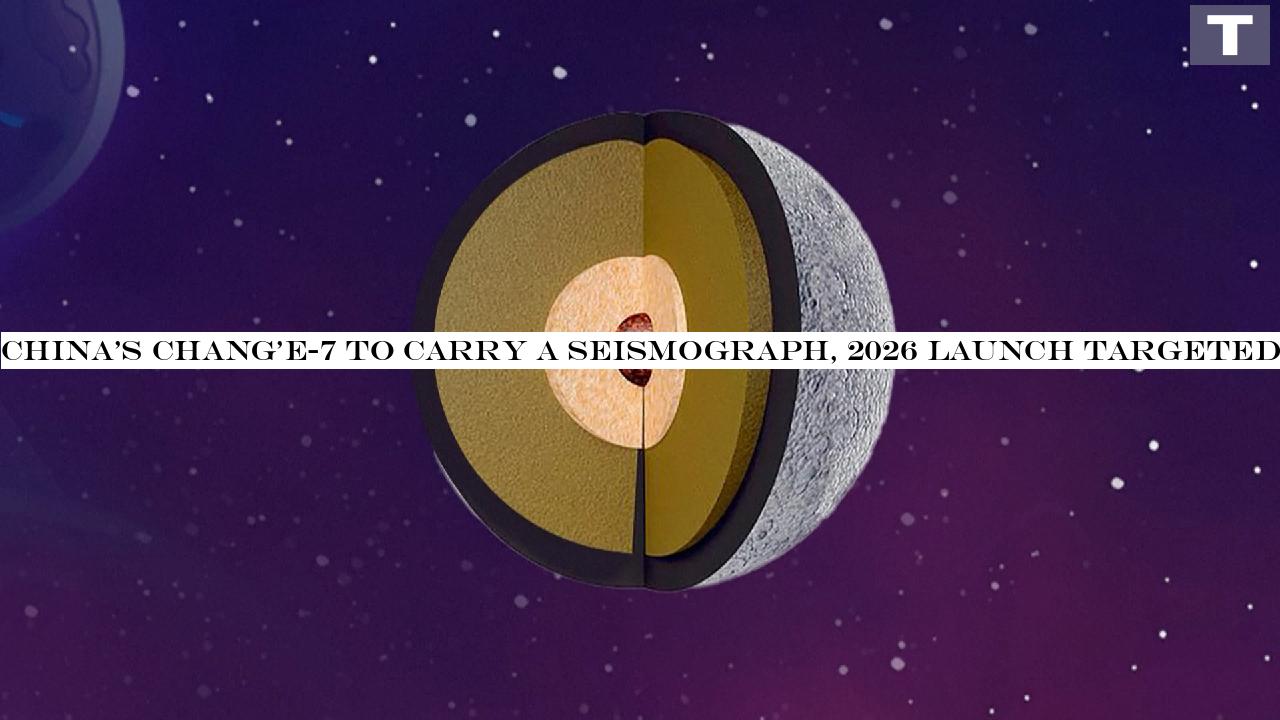INSUBCONTINENT EXCLUSIVE:
China's Chang'e-7 lunar mission, expected to launch around 2026, will be equipped with a seismograph to study moonquakes and probe the lunar
interior, according to Wu Fuyuan, a member of the Chinese Academy of Sciences (CAS) and a leading researcher with the Institute of Geology
and Geophysics under CAS."With the seismograph, we aim to investigate the moon's internal structure, especially whether there are
differences between the near and far sides," Wu said in an interview with China Media Group (CMG)
"This is also a very important part of our work."The moon displays a stark contrast between its near and far sides – a phenomenon known as
As the moon is tidally locked to Earth, only the near side is visible from our planet, featuring large dark areas known as lunar mare,
according to Li Chunlai, a researcher at CAS's National Astronomical Observatories.With samples collected by Chang'e-5 from the near side
and those by Chang'e-6 from the far side, "we can see that the morphology and material distribution on the far side are quite different,
demonstrating the moon's distinct dichotomy," Li explained. Chang'e-7 will target the moon's south pole to search for water ice and test
cutting-edge technologies critical for sustainable human activities on the moon
It will adopt an innovative hopper spacecraft equipped with a water molecule analyzer aims to confirm the presence and distribution of water
ice in permanently shadowed craters. The hopper, a first-of-its-kind lunar explorer, will "jump" from sunlit areas to shadowed craters to
conduct detailed analyses
The lander will deploy China's inaugural deep-space "landmark image navigation" system to ensure precision, while the hopper utilizes active
shock-absorption technology to safely land on slopes.The probe can autonomously analyze its landing terrain, with more than half of its
operations performed independently without requiring ground intervention
The solar panels installed vertically on the probe are being optimized to capture low-angle sunlight near the lunar pole, according to Tan
Yuhua, the deputy chief designer of the Chang'e-7 mission when interview by CMG in February. China on Wednesday released a series of
findings on the samples collected by the Chang'e-6 mission from the moon's far side. In 2024, Chang'e-6 made history by bringing 1,935.3
grams of lunar far-side samples to Earth
These samples were collected from the South Pole-Aitken (SPA) Basin, the largest, deepest and oldest basin on the moon, providing a rare
opportunity to clarify the compositional differences between the near and far sides of the moon.

